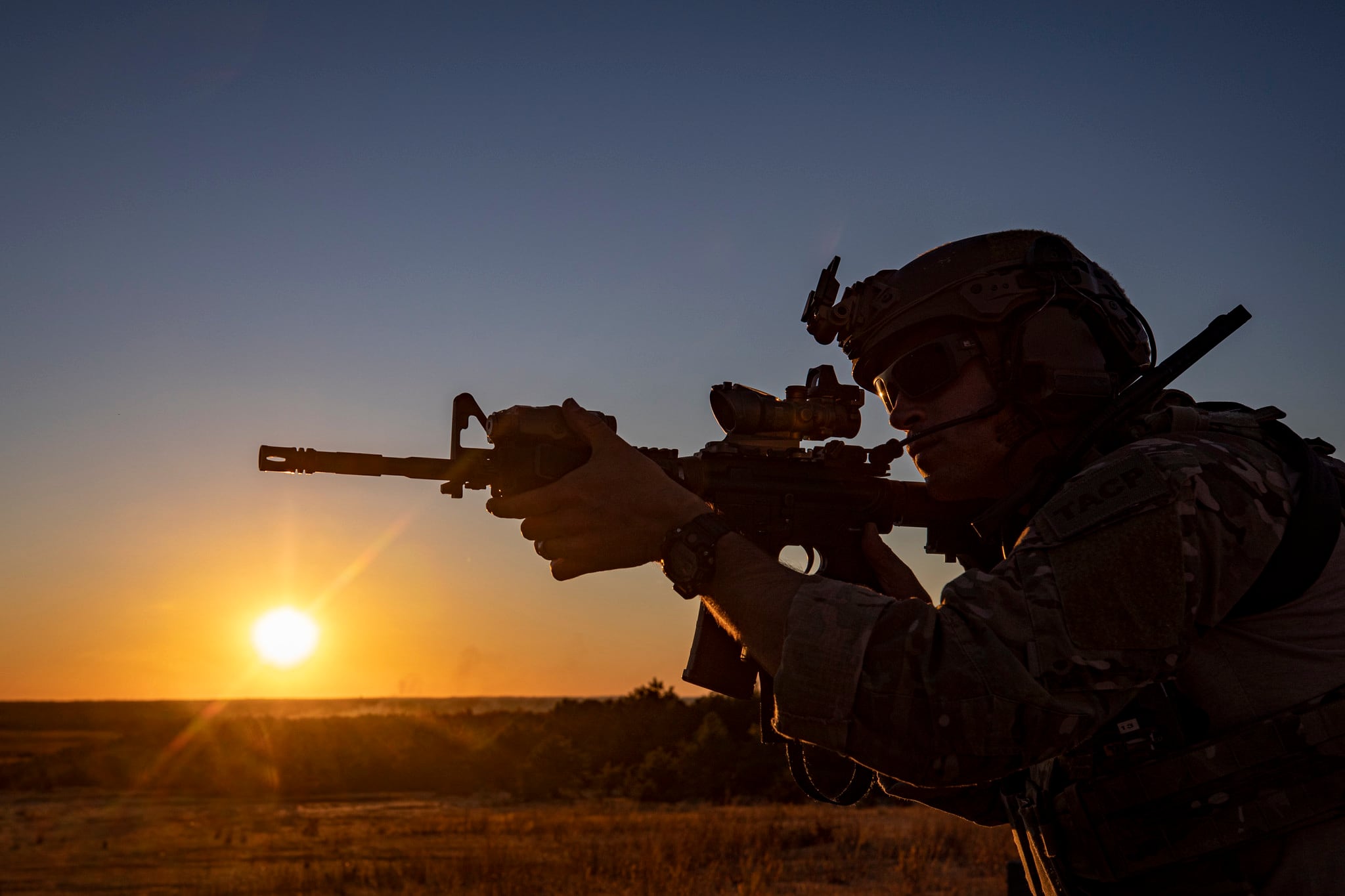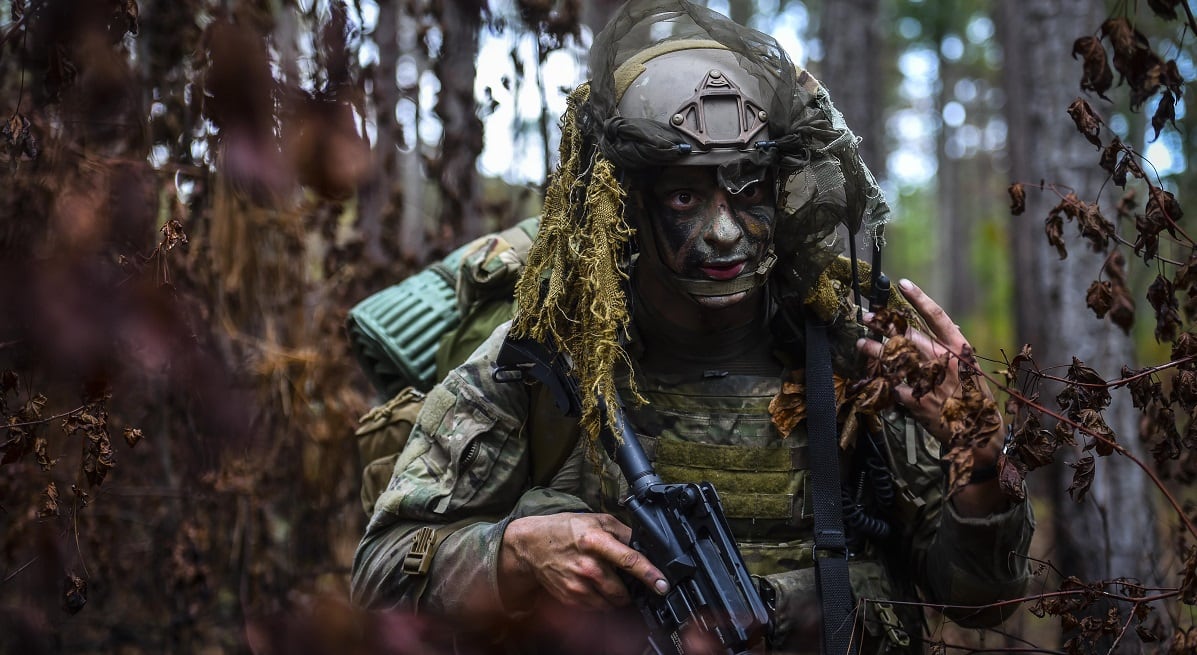Beginning in April, candidates to become enlisted special warfare airmen will enter basic training in a newly created Air Force specialty code designed for them.
Under the new Special Warfare Operator Enlistment program, special warfare candidates enter service in the new 9T500 specialty code, instead of being assigned to a combat control, pararescue, tactical air control party or special reconnaissance AFSC as soon as they join. This will give those airmen — and the Air Force — more time and flexibility to decide what career field they ultimately want to go into, officials said.
In a Thursday release, Lt. Col. Joseph Lopez, chief of the special warfare division at Air Education and Training Command, said this will allow the Air Force to assign airmen to the special warfare career fields where they’re most in need.
But, Lopez said in a Wednesday interview, it will also make it easier for a special warfare candidate to change gears if another career field best matches his or her abilities and interests.
Today, Lopez said, once a special warfare candidate chooses his intended career field, there’s no moving off of that unless the candidate doesn’t meet certain performance standards — for example, the notoriously difficult swimming requirements that pararescuemen must meet. When that happens, the Air Force reclassifies the airman into another special warfare job track or other career field, he said.
“Now, this gives a smoother transition to flow back and forth — up until a certain point — and it also gives that candidate more time to mature in his thought and understanding” and make a more informed career decision after several months of training, Lopez said.
Under the new program, which has been in the works for the last two years, enlistment standards — including the Armed Services Vocational Aptitude Battery test, physical fitness, education requirements, citizenship status, and medical requirements — will also be made common for all special warfare recruits instead of having different standards for different career fields.

Lt. Col. Heath Kerns, commander of the 330th Recruiting Squadron, which focuses solely on special warfare and combat support recruiting, said in the interview that these special warfare jobs developed separately over time, but shared a lot of the same DNA. Having separate standards unnecessarily complicated the process and filtered out potential candidates who did not qualify for one job but might have been suitable for another, he said, so it made sense to simplify things and eliminate recruits’ confusion by standardizing them.
“Ten more pushups for a pararescueman versus a combat controller doesn’t shake out all the way to the battlefield, so it shouldn’t be an entrance discriminator when we have the training pipeline that can help … forge them, refine them, mold them, guide them to that calling, so they can go forth and be special warfare operators,” Kerns said. “We recognized that the entrance bar didn’t have to be higher, because higher didn’t correlate with greater success.”
RELATED

The entry standards just have to determine, Kerns said, “Do you have what it takes to have a shot? Then we give you every opportunity to take that shot.”
But Lopez stressed that the Air Force is not lowering its standards.
“The standards that are in place now are still there,” Lopez said. “It’s a different approach to meeting those standards, and is a holistic approach through a coach-mentor developed process, that is helping that candidate achieve his goals. We’re not lowering any standards in any way, it’s a different model.”
Kerns said having one AFSC will also simplify things for recruiters in his squadron, because they can target special warfare as a whole and not four different disciplines.
This will be the latest change in how the Air Force recruits and trains new special warfare airmen in recent years. For example, Kerns’ 330th Recruiting Squadron was activated in June 2018. And in October 2018, AETC stood up a Special Warfare Training Wing at Joint Base San Antonio-Randolph in Texas to combine initial entry courses and build more of a team mentality between airmen in different special warfare career fields.
The Air Force said that the revised process for steering special warfare candidates toward their eventual career field will begin during the recruiting process, before they are accessed. Recruiting development teams will identify potential candidates for special warfare and start preparing them for the rigorous training pipeline and their eventual career field.
Potential candidates must pass the Physical Ability and Standards Test, which is the entry-level fitness test for joining enlisted special warfare career fields, and then compete for selection and receive a developer recommendation.
At that point, they become a special warfare candidate as a 9T500 airman and ship out to basic military training at Joint Base San Antonio-Lackland in Texas. At basic training, they learn the usual subjects including the mission, vision, core values, history and priorities of the Air Force, as well as drill and ceremony, field training and joint warfare. The special warfare candidates also receive additional physical training and special warfare education to prepare them for their next stop: the Special Warfare Preparatory Course.
After the prep course, the Air Force looks at each candidate’s performance at basic training and the prep course, as well as candidates’ preferences, and then steers them into either the Special Tactics and Guardian Angel course of initial entry, or the TACP course. Candidates who complete the four-week Special Tactics and Guardian Angel course are then assigned to the combat control, pararescueman or special reconnaissance career paths — at which point they leave the 9T500 AFSC — and go on to that job’s training pipeline, as do those who finish the TACP course.
“Nothing is given,” Lopez said in the release. “Airmen must earn their spot in their chosen career field and fight for it.”
Stephen Losey is the air warfare reporter for Defense News. He previously covered leadership and personnel issues at Air Force Times, and the Pentagon, special operations and air warfare at Military.com. He has traveled to the Middle East to cover U.S. Air Force operations.
